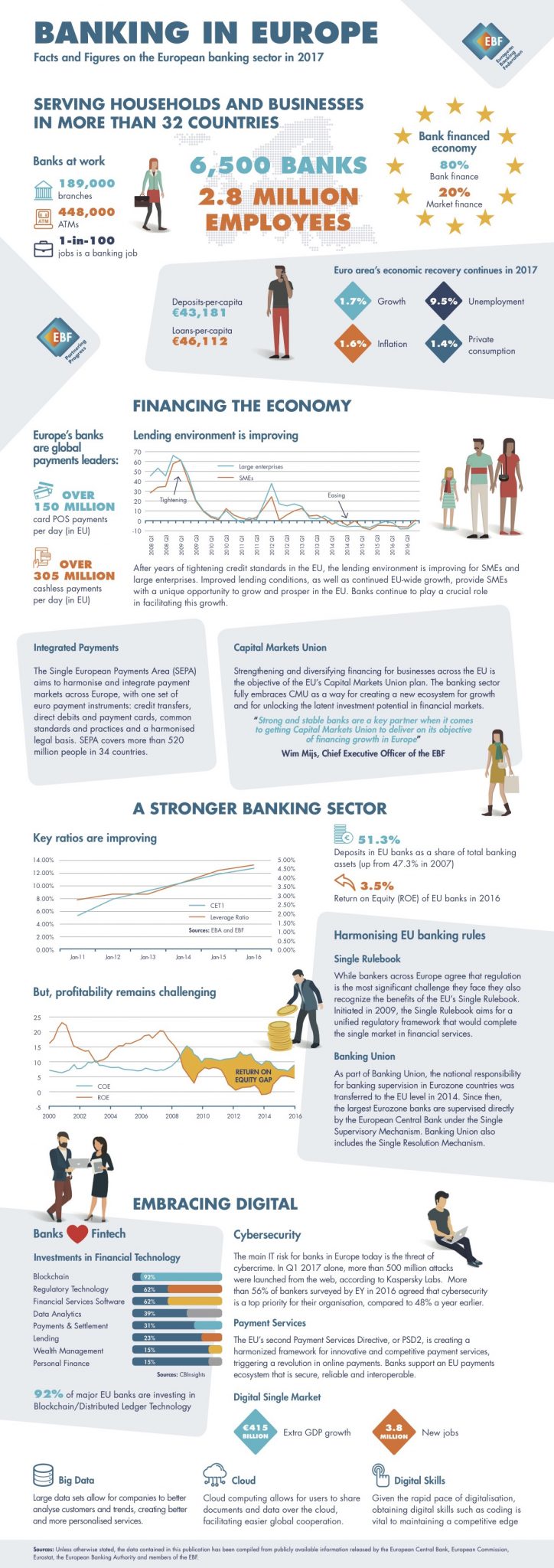Infographic: banking in Europe 2017 – EBF facts and figures
European Banking Federation (EBF) has published its annual update on the banking sector in Europe. According to the EBF findings, staff numbers and branches in the European banking sector continued to shrink in 2016, while Eurozone deposits and loans grew slightly.
The number of bank branches in the EU declined to 189,270 – about 9,100 branches were closed last year. By comparison, the number of branches in 2008 stood at 237,701.
The number of people working for credit institutions in the EU fell to 2.80 million last year from 2.85 million a year earlier. This compares to 3.26 million in 2008.
The number of credit institutions in the EU has consistently fallen for eight years in a row and declined last year by 453 to 6,596 banks from 8,525 in 2008. Germany is home to more than 25% of all banks in the EU.
The total deposits from businesses and households, as defined by non-monetary financial institutions, grew by 1.2% in 2016 to €15.9 trillion in the EU at the end of 2015, with €11.8 trillion in deposits in the euro area. Deposits from households rose 1.7% compared to a year earlier while business deposits increased 3.7%.
The value of loans to EU households declined 0.9% to €7.6 trillion, reflecting a drop in non-euro area values. Loans to households in the euro area however grew for a second consecutive year, adding some €200 billion since 2014.
More facts and figures in this infographic created by EBF:









































